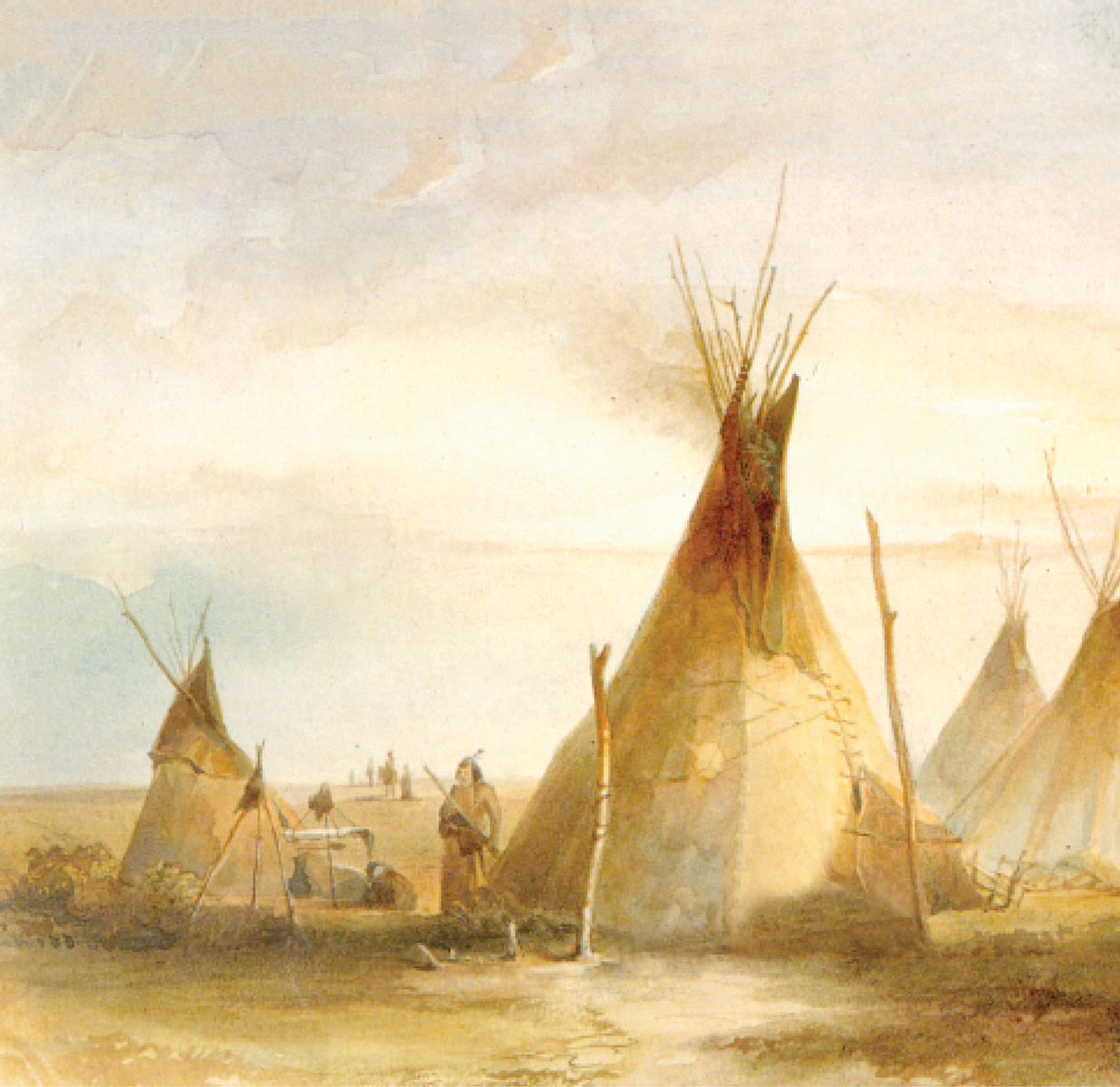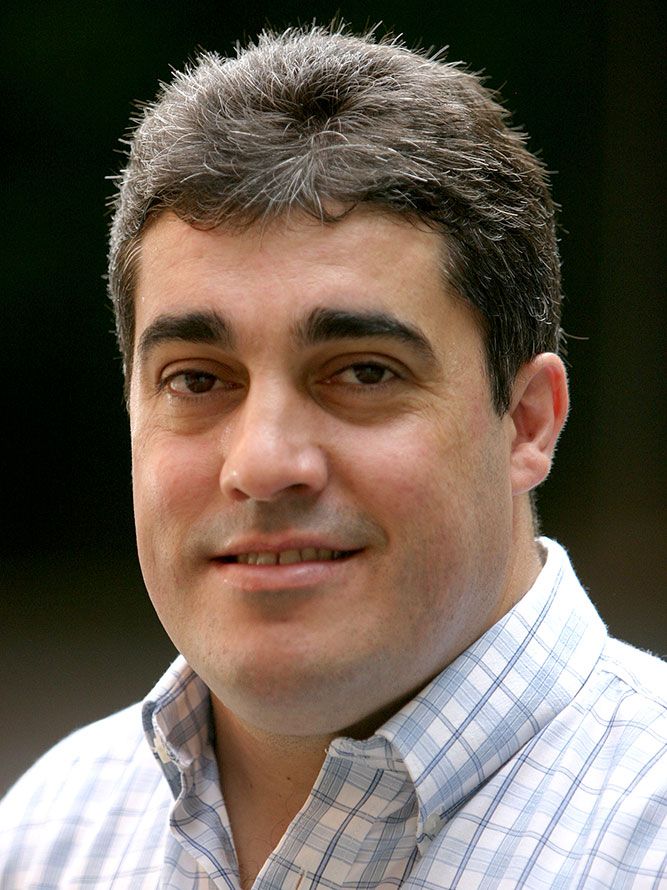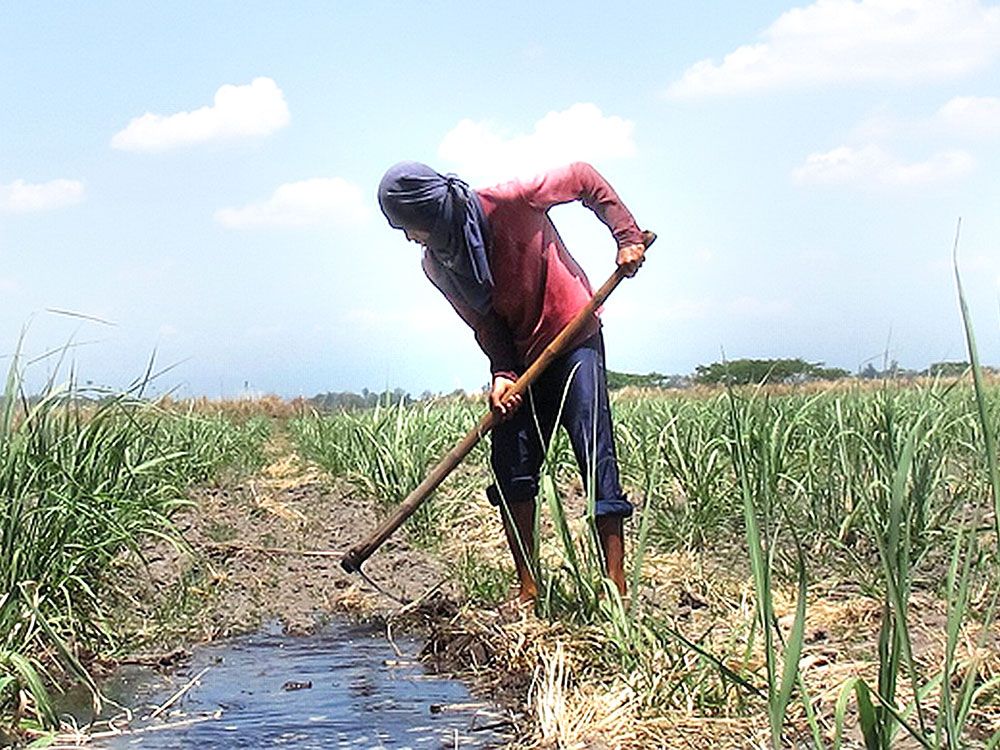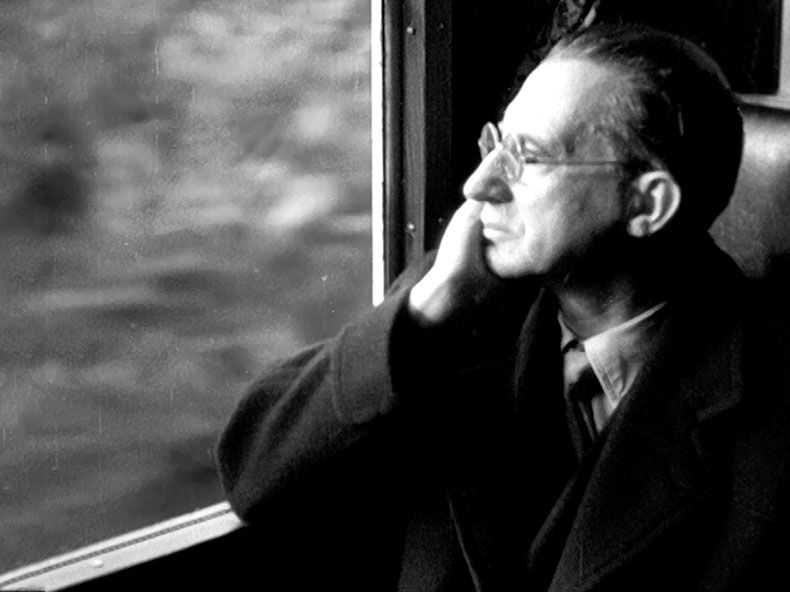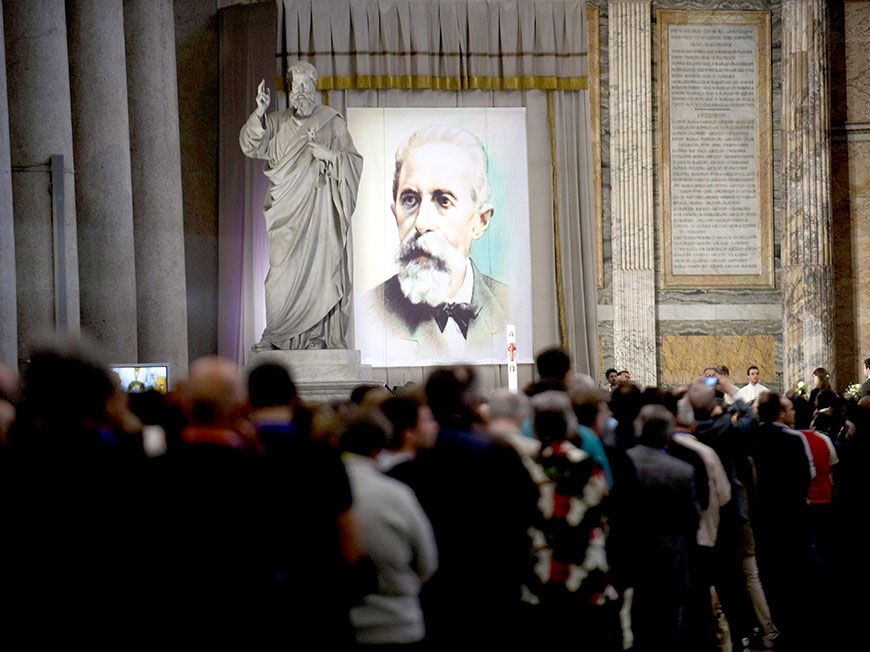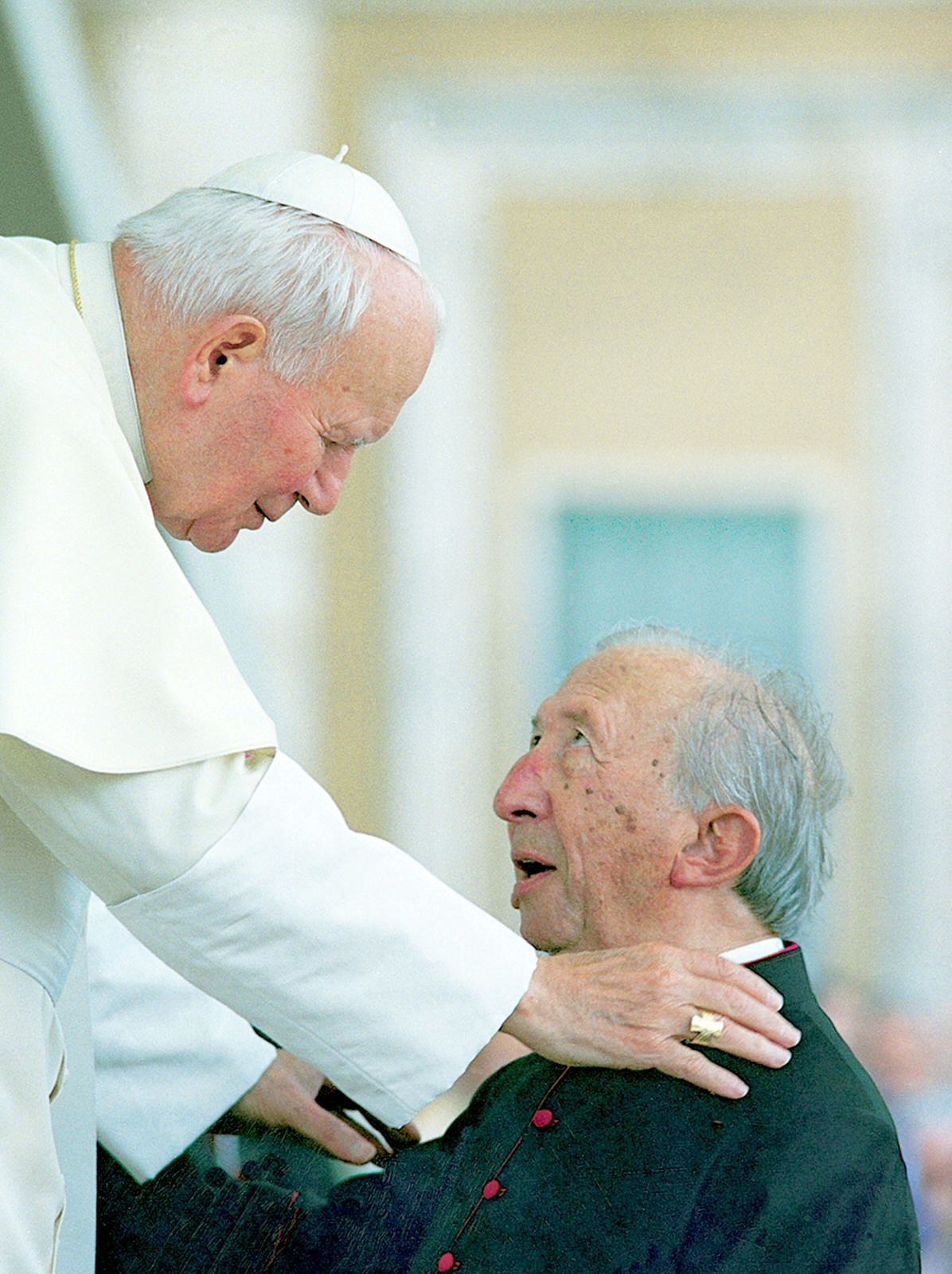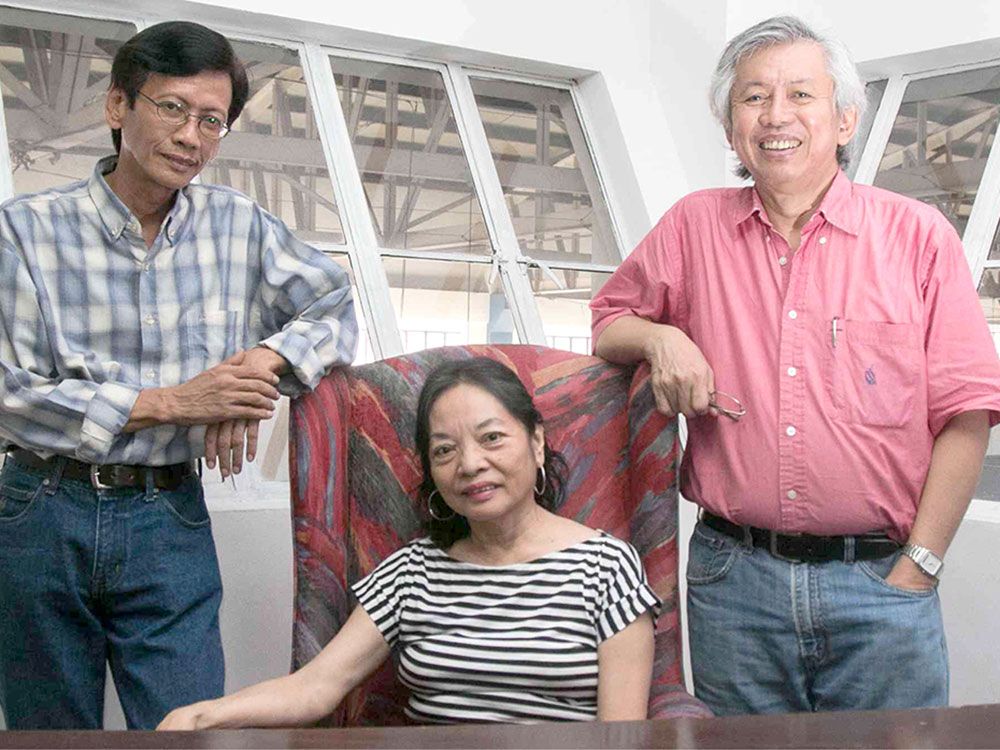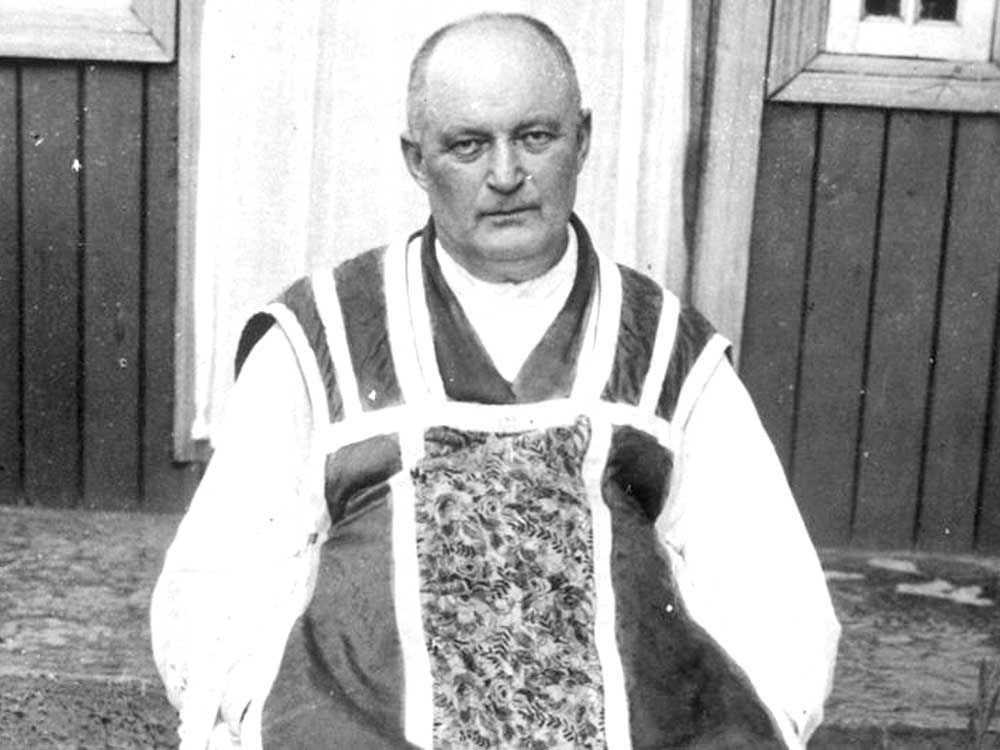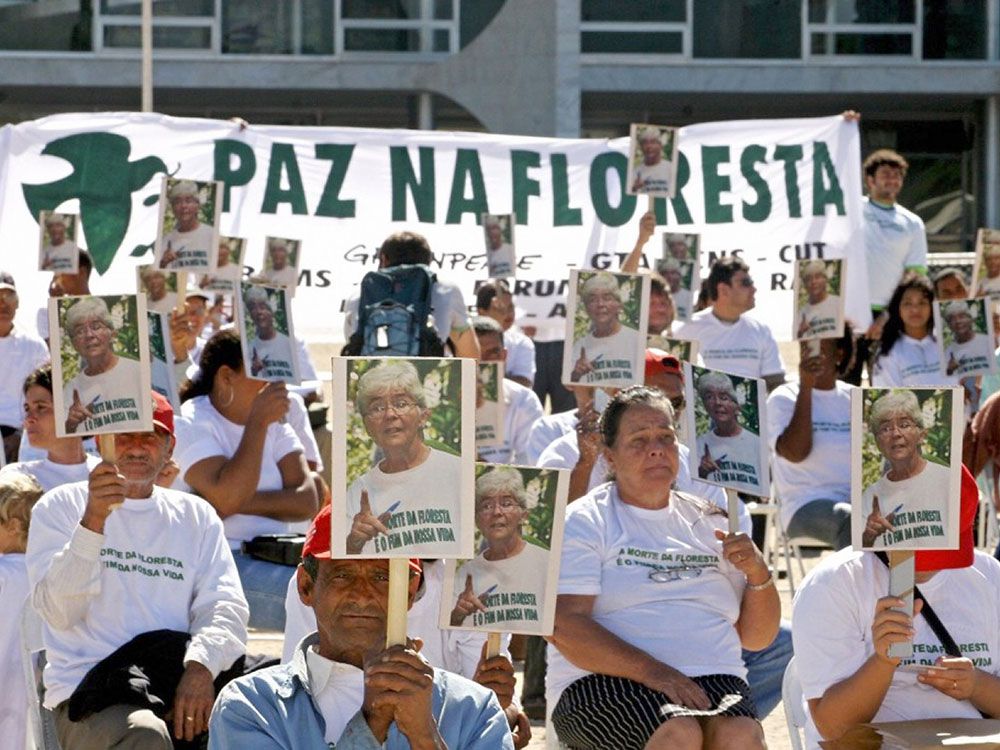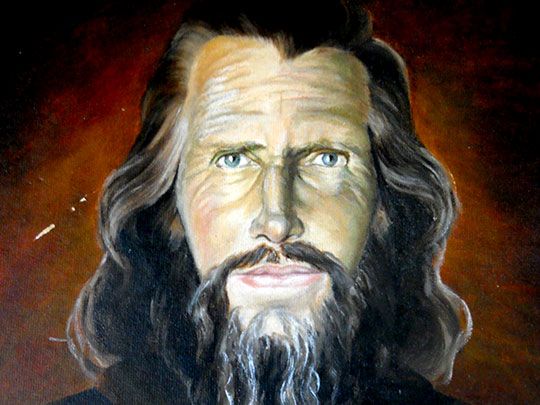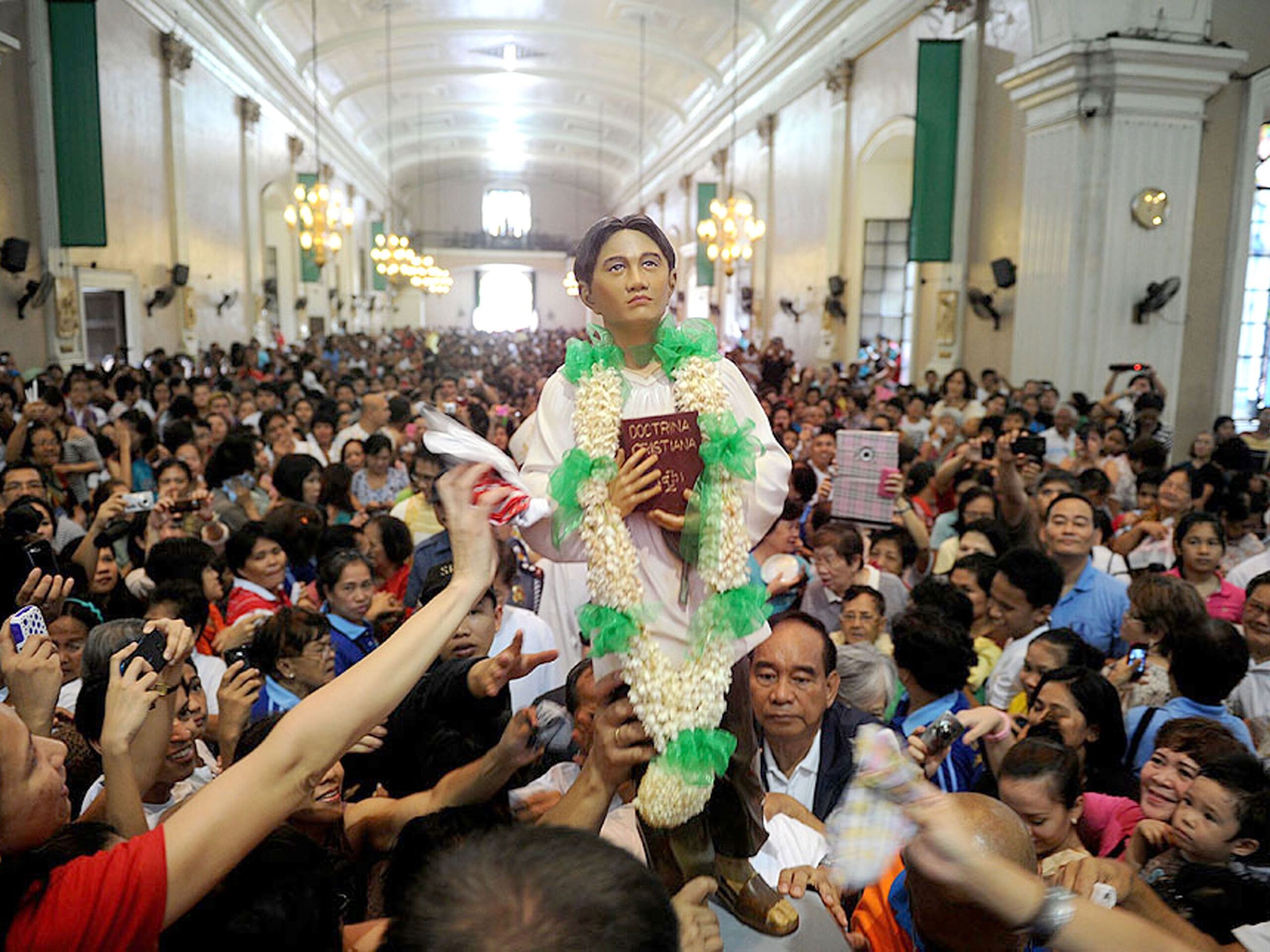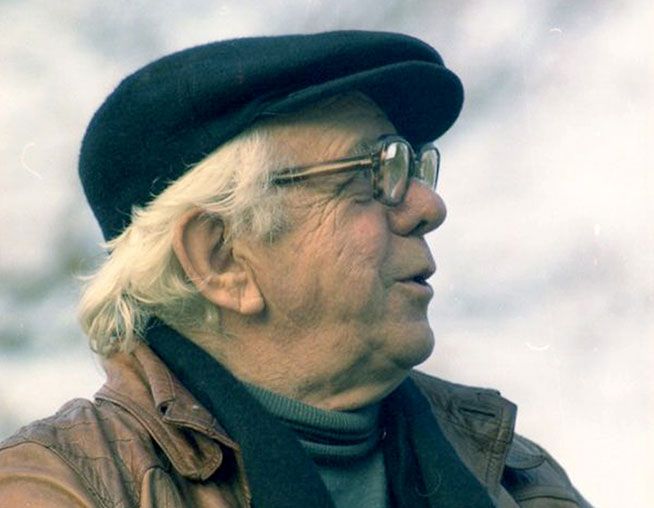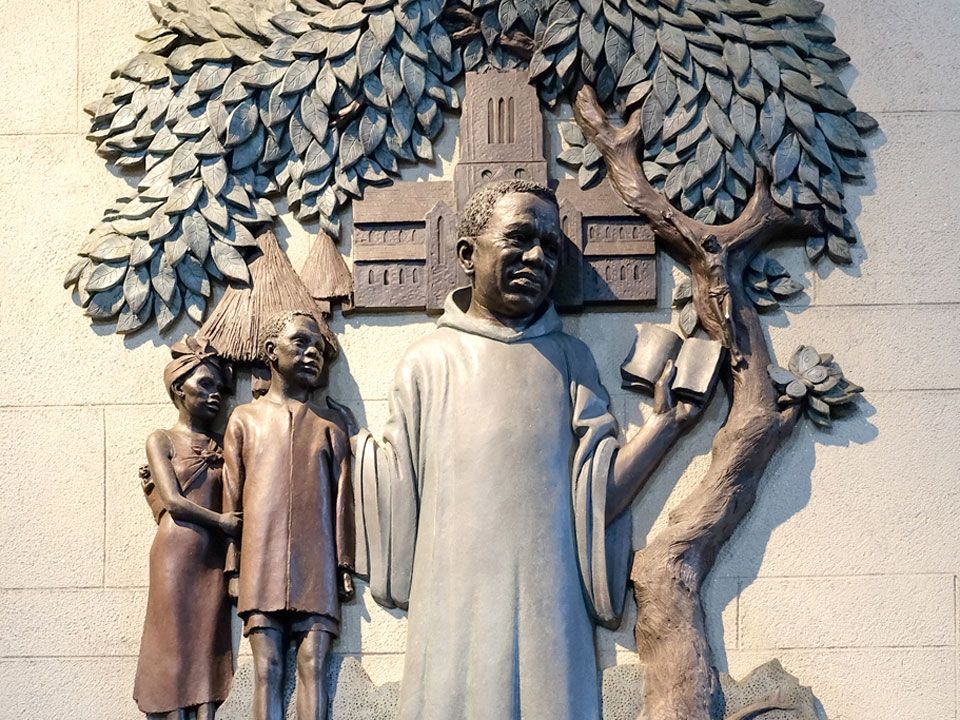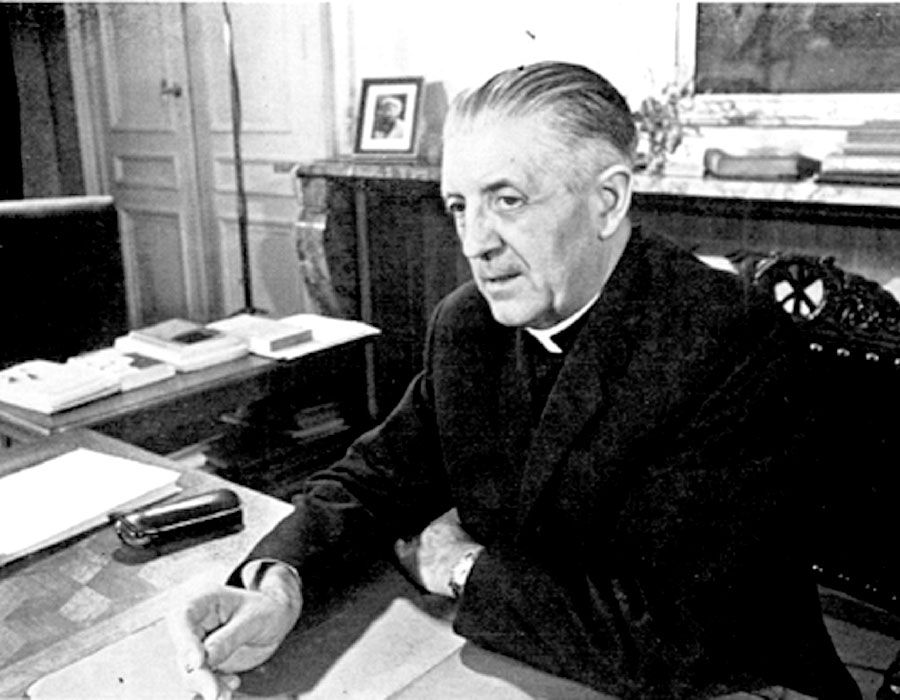It was August 13, 1642 when the young Jesuit missionary from France, Fr. Isaac Jogues, returned to his mission in Three Rivers from the center of Quebec in what was then New France (Eastern Canada). In that year, the Huron country had been in great distress. Harvests were poor, sickness abounded, and clothing was scarce. Quebec was the only source of supplies, and Fr. Isaac Jogues was chosen to lead an expedition for that purpose. His group reached its objective safely and started back well-supplied with goods for the mission, but the Iroquois, the bitter enemies of the Hurons and fiercest of all Indian tribes, were on the warpath and ambushed the returning expedition.
Fr. Jogues and his companions were captured by the Mohawks, members of the Iroquois nation. His letters and journals tell us how he and his companions were led from village to village, how they were beaten, tortured and forced to watch as their Huron converts were mangled and killed. Fr. Jogues himself lost some fingers because of torture, suffering apparently beyond the threshold of natural endurance. Eventually, they were carried to the Indian village of Ossernenon, now Auriesville, on the Mohawk River, about forty miles above the present city of Albany.
All Fr. Jogues’ companions were killed. For some reason, however, the Mohawks spared him, perhaps as protection against reprisal from the French. In Ossernenon, he remained for thirteen months in slavery. He ended up in the service of a respected old Mohawk woman who preserved his life more than once and even called him “nephew.” Once, while Fr. Jogues was acting as his “aunt’s” porter to a Dutch Calvinist town, the men of the town offered to help him escape. At first, he refused since he was learning the ways and language of the Mohawk people and felt he might even be able to share his beliefs with them.
But eventually, when he was about to be burned to death, he was convinced to take refuge in a sailing vessel which carried him to New Amsterdam (New York). From there he was sent, in mid-winter, across the ocean. After a voyage of two months, he landed on the coast of Brittany on Christmas morning of 1643, in a state of absolute destitution. From there, he painfully found his way to the nearest college of the Society of Jesus. Appearing at the Jesuit house, the unrecognizable Fr. Isaac Jogues told the Rector he had news from New France.
Immediately, the Rector asked if the shabby stranger knew Fr. Isaac Jogues, who was rumored dead because of his more-than-one-year absence. “Very well indeed” the stranger answered. “Have they murdered him?” the good Rector asked. “No, Father. He is alive and free and I am he!” the shabby stranger exclaimed.
Like the protagonist of the recent movie “The Revenant” starring Leonardo di Caprio, Fr. Isaac appeared as one who has come back from shadow land, the only Jesuit missionary captured by the fierce Red Indians who managed to escape with his life. The news spread like wildfire. Everybody wanted to see him. Even Queen Anne of Austria stooped to kiss his mutilated hand. The humble priest was embarrassed by all this attention. He hid his mangled hands in the folds of his cassock and begged to be sent back to the Indians.
Several fingers had been cut, chewed or burnt off. Pope Urban VIII gave him permission to offer Mass with his mutilated hands, saying: “It would be shameful that a martyr of Christ would not be allowed to drink the Blood of Christ.” No similar concession, up to this time, is known to have been granted. Welcomed home as a hero, Fr. Jogues might have sat back, thanked God for his safe return and died peacefully in his homeland. But his zeal led him back once more to the fulfillment of his dream. In a few months, he sailed again for his missions among the Hurons.
The young scholar
Isaac Jogues was born on January 10, 1607, in Orléans, France, into a middle-class family that had him educated at home. In 1624, at the age of 17, he entered the Jesuit novitiate at Rouen, where the master of novices was Louis Lallemant. The Master already had two brothers and a nephew serving as missionaries in the colony of New France in North America. Paul Le Jeune, superior of the Jesuit mission in New France, had conceived a plan to keep the church and laity informed of the mission’s undertaking, through a careful compilation of missionaries’ letters. These described in detail their experiences and impressions. Similar letters, called Jesuit Relations also came from other missions.
As a Jesuit novice, Isaac Jogues read these enthralling letters. He was especially moved by the account of the martyrdom by fire of Carlo Spinola, SJ in Japan in 1622. Thereafter, Isaac Jogues always carried Spinola’s picture with him. He professed simple vows in 1626, and was sent to study philosophy at the Royal College in La Flèche.
The Jesuit community running it had a strong missionary spirit. Its teachers included missionary pioneers like Fr. Jean de Brébeuf, the superior of the Jesuit mission after the colony had been taken over by the British following the Seven Years’ War. Upon completing these studies, Isaac was sent to the Collège de Clermont in Paris to pursue his study of theology.
In 1636, Isaac Jogues, now a newly-ordained priest and 29 years old, joined the small band of Jesuits at Three Rivers, a tiny French trading post on the St. Lawrence River. He arrived with the small Mass kit that his mother had given him. He also arrived with the hope that the Hurons, who were completing their summer’s trading, would allow him to travel hundreds of miles inland with them when they returned home.
The “Indian Nations”
Over the centuries, the native peoples of America had developed societies which were based on delicate balances among the tribes and their natural setting. Their pace of life, their boundaries, and their means of livelihood corresponded with nature. Over the ages, various tribes along the water routes, now called the St. Lawrence Seaway and the Great Lakes, confederated into “nations”: the Algonquin tribes north of the St. Lawrence, the Huron peoples north of the lake bearing their name, and the Iroquois confederation south of the Great Lakes.
They lived in longhouses, wooden dwellings used as communal homes or council halls, in the cold winters and traveled to fishing and hunting grounds in birch-bark canoes during the summer. Their life was demanding: the rigid winters and the inter-tribe warfare contributed to the fierce character of the Native Americans. They used to kill their prisoners painfully after long torture.
It was soon after his arrival that Fr. Jogues witnessed these gruesome proceedings in which the Indians did not distinguish between killing an enemy in defense and taking vengeance after the battle. He would soon be a victim of this barbaric habit. Centuries of tribal customs, dictated against the Christian sensitivity and way of life, made the missionaries understand that their conversion would be an uphill struggle.
When explorers came from Europe, many disdained the native people of America. They brought with them a culture that disturbed the natural balance. They brought diseases for which the Native Americans had developed no resistance and weapons which enabled one group of people to make another captive. They also brought the foreign concept that the land demanded ownership and that the natural gifts of the earth belonged to a specific individual.
Enduring the two-month Atlantic journey, the Jesuit priests then came, dressed in their black robes. They traded their French education and homeland for a chance to share with the Native Americans what was most dear to them – their faith, their belief in God’s love. They came with full knowledge that they would likely suffer and die for the truths they held most dear. And they were not wrong.
Missionary Experience
At last, Fr. Jogues had the chance of travelling by canoe deep inside the Indian nations’ territory, accompanied by Jean, a Jesuit lay helper. For weeks, the two newcomers squatted shoeless and motionless in the fragile canoes as they followed the St. Lawrence and Ottawa Rivers westward. The Jesuits at Three Rivers had told Fr. Jogues to be of as much use as possible, so he helped gather wood for their evening meal and helped carry the canoes and supplies when they came to dangerous rapids or to the land they must cross between waterways. Jean and Fr. Isaac began to grow accustomed to the Hurons’ habits and to the sound of their language and learned, of necessity, to eat the native food.
The Hurons were traditionally friendly to all strangers. The Blackrobes felt free to move in and out of the longhouses of the villages and knew the Indians would share what they had with them. The Hurons felt equally free to sit near the fire in the Blackrobes’ lodge, to partake of their meals, and to talk to them of their belief. Sometimes they would wait for hours to hear the clock chime over and over, mystified, and convinced that a spirit within it was speaking to the priests.
Pere Jean de Brebeuf, who had been the first “Blackrobe” to reach the Hurons a few years before and who would later be martyred and canonized, greeted Isaac when he reached the Huron village near the present location of Midland, Ontario. Fr. Jogues’ arrival brought the Blackrobes’ total to five, three recently arrived. Fr. Brebeuf began sharing his several years of experience with the newer missionaries. “We can only progress slowly and count on God’s ways,” he cautioned the newcomers.
He had baptized few Hurons in the years he had been there, most as they lay dying. Only God would know if they made progress. Christian conversion seemed far distant to the missionaries. When the yearly reports, that traveled east by canoe and ship, reached France, the missionaries admitted to no conversions among the Hurons – until a surprising thing happened.
One day, at a council fire, a respected old warrior spoke up and related the concern and wisdom he had seen the Blackrobes freely share. He asked Fr. Brebeuf to baptize him. Later Fr. Brebeuf questioned the Huron closely to make sure he realized the radical difference baptism should make in his way of life. The warrior was committed to that change and so was baptized and given Peter as Christian name. This man of stature gave credence to the Blackrobes’ views so that other families joined “Peter” and the new Christian way of life.
They lived together in villages for mutual support. They prayed in the way of the Blackrobes. Their way of life made a marked contrast to that of their tribesmen. Becoming a Christian was a radical decision but, once they took the step, they were as unflinching in their faith as their Huron training had required in every other aspect of their lives. Eventually, many Hurons would be Christian martyrs.
Final Destination
The Jesuits of Three Rivers were astonished to see Fr. Isaac Jogues reappear on a ship from Europe. Fr. Jogues was equally surprised to hear that the Hurons and Iroquois had cautiously begun to trade prisoners rather than kill them. Fr. Jogues went back to Ossernenon, the place of his captivity, as an envoy of the French to help with this peace effort. Then he decided to return there a second time, not as a diplomat but as a priest.
Before leaving, he wrote these words to a fellow priest: “My heart tells me that, if I am the one to be sent on this mission, I shall go but I shall not return. But I would be glad if our Lord wished to complete the sacrifice where He began it. Farewell, dear Father. Pray that God may unite me to Himself inseparably.”
Fr. Jogues returned to his “aunt’s” longhouse but could tell she was concerned for him once again. A long summer’s drought was believed to have been caused by evil spirits in his Mass kit. Also, the younger warriors were irritated by their elders’ moves towards peace and knew that Fr. Jogues had encouraged the exchange of prisoners. While the elders were in council, a young Mohawk asked Fr. Jogues and a Jesuit volunteer, who had come with him, to come and speak to the young braves in his lodge.
Both “Auntie” and Fr. Jogues knew that he would have no security outside her longhouse, yet, to refuse the invitation would be unthinkable. On October 18, 1646, upon entering the cabin, he was struck with a tomahawk and afterwards decapitated. The head was fixed on the Palisades and the body thrown into the Mohawk.
Fr. Isaac Jogues, Fr. Jean de Brébeuf and six other martyred missionaries, all Jesuit priests and laymen associated with them, were canonized in 1930. They are known as “The North American Martyrs.” A shrine was built in their honor at Auriesville, New York, about nine miles east, at a site formerly believed to be that of the Mohawk village. Another national shrine is in Canada. Their feast day is celebrated on September 26 in Canada and on October 19 in the United States of America.

